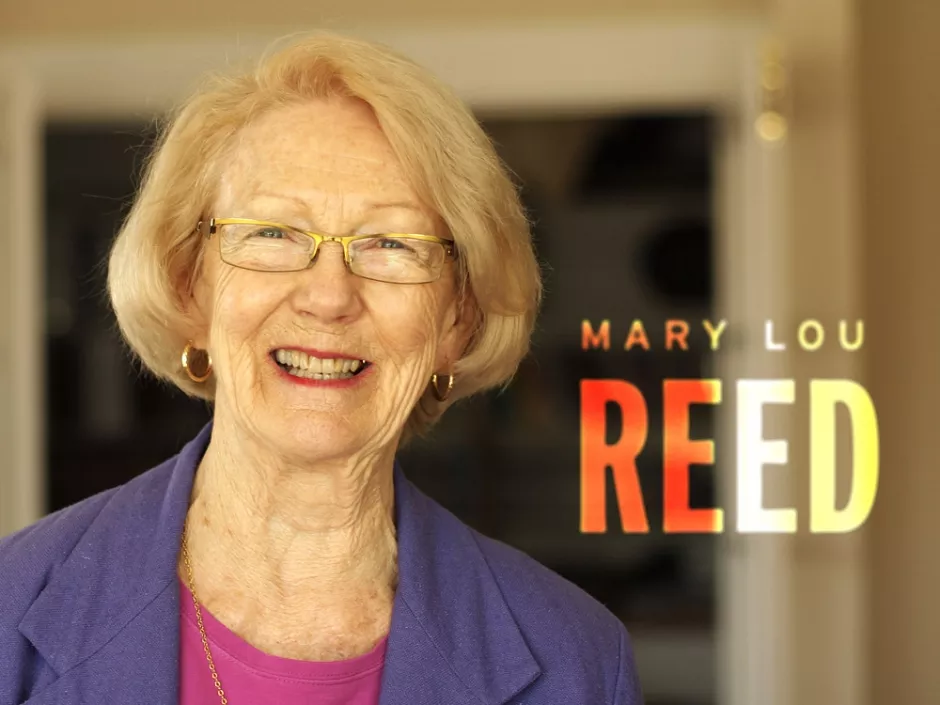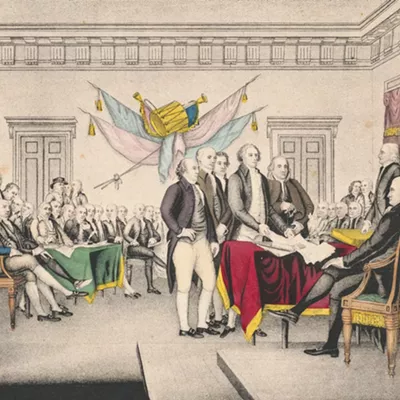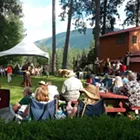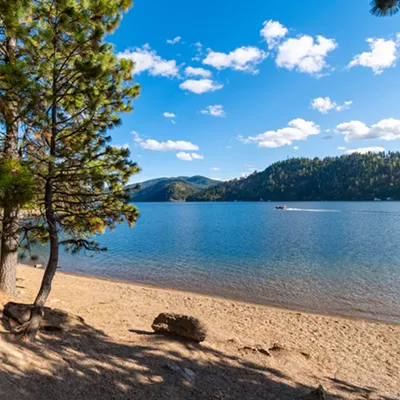My family has skied, hiked and otherwise played in the Silver Valley during each of the many years we’ve lived in North Idaho, and the attractions just keep growing. Now you can bike the Trail of the Coeur d’Alenes or the Route of the Hiawatha, or take in mining history in Wallace and Kellogg. But my recent excitement in viewing the amazingly well done exhibit at the Old Mission State Park in Cataldo inspired me to share some of the details of this newly added attraction.
Old Mission State Park is just 30 minutes from Coeur d’Alene on I-90, and twice that from Spokane. You have probably viewed the Old Mission from the car, which stands high on a knoll overlooking a camera-ready view of green pine, fir and cottonwood trees against purple-tinted mountains.
Before you visit the church and wander the grounds, walk or run to see the amazing new exhibit, Sacred Encounters: Father De Smet and the Indians of the Rocky Mountain West, housed in a new, longhouse-shaped building built especially for the now permanent collection recently purchased by the Coeur d’Alene Tribe.
The exhibit details the remarkable story of two cultures, the Indian tribes of the Northern Rockies and the Jesuit Black Robes, who came together — from separate but surprisingly similar worldviews — to found a Christian community in the mid-19th century in the wilds of North Idaho.
This unlikely union was foretold by Shining Shirt, a Salish prophet and medicine man. He predicted the arrival of fair-skinned men wearing black robes who would bring a different way of praying and a more powerful moral law.
Three Indian tribes, the Nez Perce, Salish and Iroquois, were convinced they would benefit from the power of the Black Robes. Four separate delegations traveled from Indian Country to St. Louis in search of the men “who wore the cross of the Man-God and did not marry women.” On the fourth visit, they recruited Flemish Father Pierre-Jean De Smet to bring the Catholic message west to the tribes of the Northern Rockies.
The exhibit traces the interaction of the black robes and the native tribes in nine dramatic scenes, accompanied by music and video. The surprising similarities of the religious beliefs are recounted — the power of chant, prayer, ritual and guardian spirits (also known as saints) are valued in both traditions. The visitor follows the tribes’ dwindling independence, as United States officials entered the picture with their forked tongues and deceitful ways.
I cannot heap enough praise on the quality of the exhibit and the information it delivers. The heart-thumping pictures of Indian girls and boys forced to wear the white man’s clothes and live in dormitories away from their families carry a strong emotional jolt. As did the theft of the Bitterroot Valley land from the Salish by our government and the forced removal of tribal members to the Flathead reservation.
The concluding exhibit of portraits of recent tribal leaders with their proud messages portrays a happier, more positive present-day situation. It’s a wonder and a gift to have an exhibit of this caliber in our midst.
Sacred Encounters was the significant lifework of Washington State University professor, Dr. Jacqueline Peterson, who directed and curated the exhibit as well as authored the book of the same name, with assistance from Smithsonian Institution staff and advisers.
And, if you haven’t been there before, don’t miss stepping inside the Old Mission. The church has been in continuous use since 1853 and is celebrated as the oldest building in Idaho.
The restored blue Parish Hall stands tall beside the Old Mission, framed against the sky like an Andrew Wyeth painting framed by North Idaho’s scenery.


















